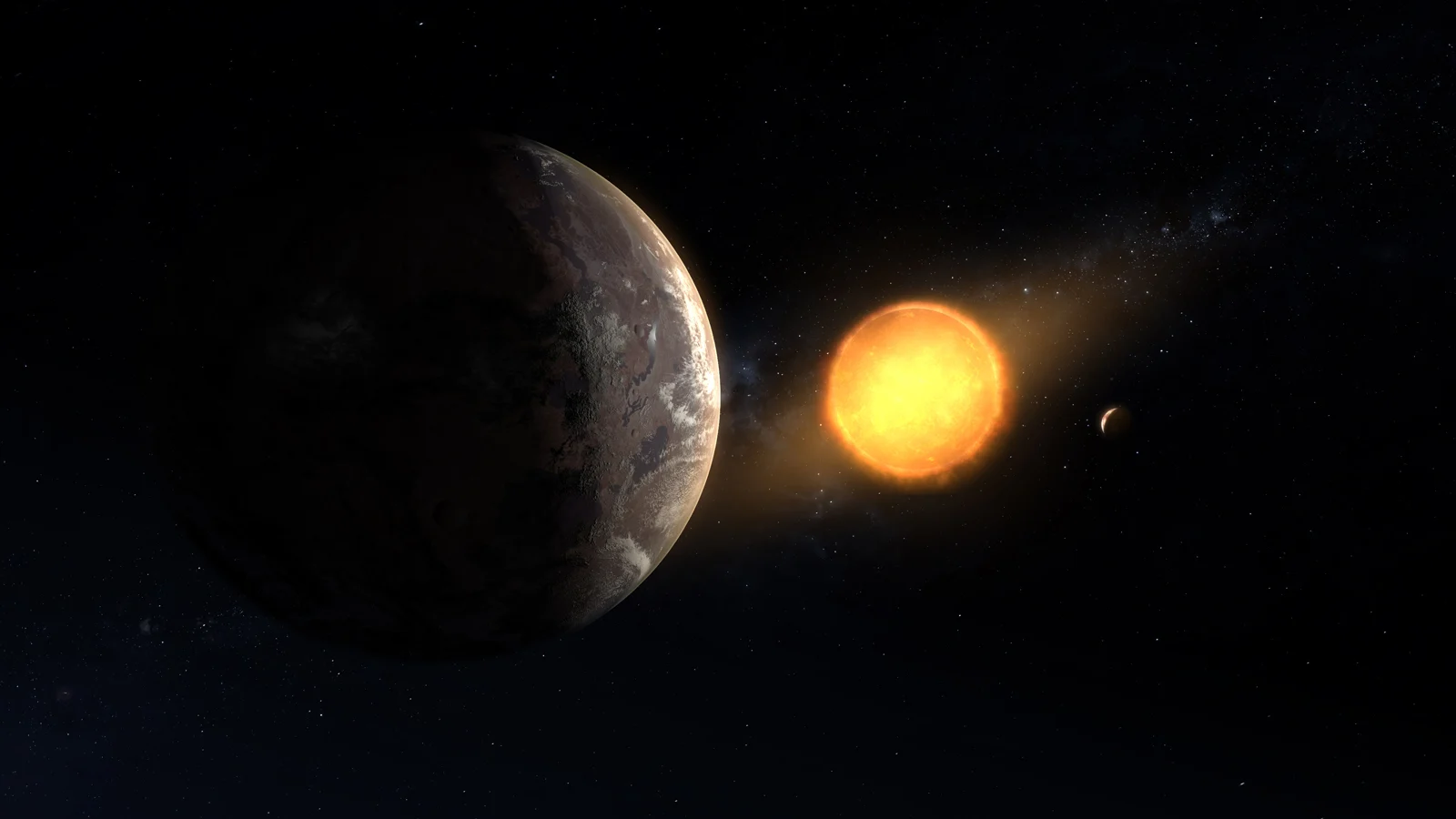
Lost and Found: Rediscovered exoplanet may be the most Earth-like so far
Hidden in Kepler data for years now, exoplanet Kepler-1649c may be the best candidate yet to host alien life
NASA's Kepler Space Telescope has helped astronomers find thousands of alien worlds. The latest discovery plucked from the data, one that was lost and then found again, appears to be the most Earth-like exoplanet spotted so far.
Kepler-1649 is a red dwarf star, tiny compared to our Sun, that is located roughly 300 light years away from Earth. As one of about 150,000 stars observed by the Kepler Space Telescope during its first four years in operation, this red dwarf was scrutinized for what are known as 'transits' - dips in the brightness of the star's light, due to a planet passing in front of it.
Kepler initially did record dips in the brightness of Kepler-1649, attributing them to one planet - a Venus-like world called Kepler-1649b, which astronomers confirmed a short time later. Although there were also indications that the star might be host to a second exoplanet, these results were initially rejected. A special computer program, named Robovetter, written to automatically sift through the volumes of Kepler data, labelled this second candidate as a 'false positive'.
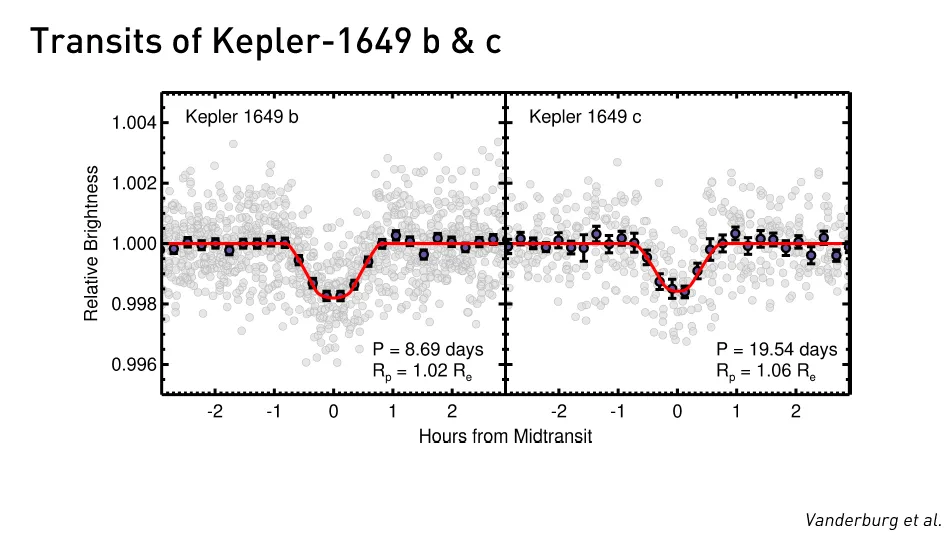
These transits recorded from Kepler-1649, reveal the two exoplanets orbiting the star. Credit: Vanderburg et al.
A false positive for Kepler happens when the dip in a star's brightness turns out to be from a different source than an exoplanet. It could be a glitch in the data, interference from another celestial object in the view, or perhaps a large sunspot on the star. Since these other effects have a particular 'look' to them, in the data, they can be distinguished from real evidence of exoplanet transits.
Fortunately, since it is possible for Robovetter to make a mistake, researchers take the time to go back over the false positive data. This allows them to double-check in case they need to 'rescue' a lost exoplanet from the rejected data.
"Out of all the mislabeled planets we've recovered, this one's particularly exciting – not just because it's in the habitable zone and Earth-size, but because of how it might interact with this neighboring planet," Andrew Vanderburg, from the University of Texas at Austin, told NASA. "If we hadn't looked over the algorithm's work by hand, we would have missed it."
IS IT 'EARTH-LIKE'?
Newly rescued Kepler-1649c is a very promising discovery.

The exoplanet is estimated at only 6 per cent larger than Earth, making it truly Earth-sized. This is important because a smaller planet, like Mars, may not be able to hold on to its atmosphere. As was discovered with Mars, although it may have been quite habitable in the past, since its interior apparently cooled faster than Earth's, it lost its planetary magnetic field and thus lost quite a bit of its atmosphere to the solar wind.
On the other hand, a larger planet may hold on to too much atmosphere and become a hellish Venus-like world, or a water world, or even an 'ice giant' like Neptune.
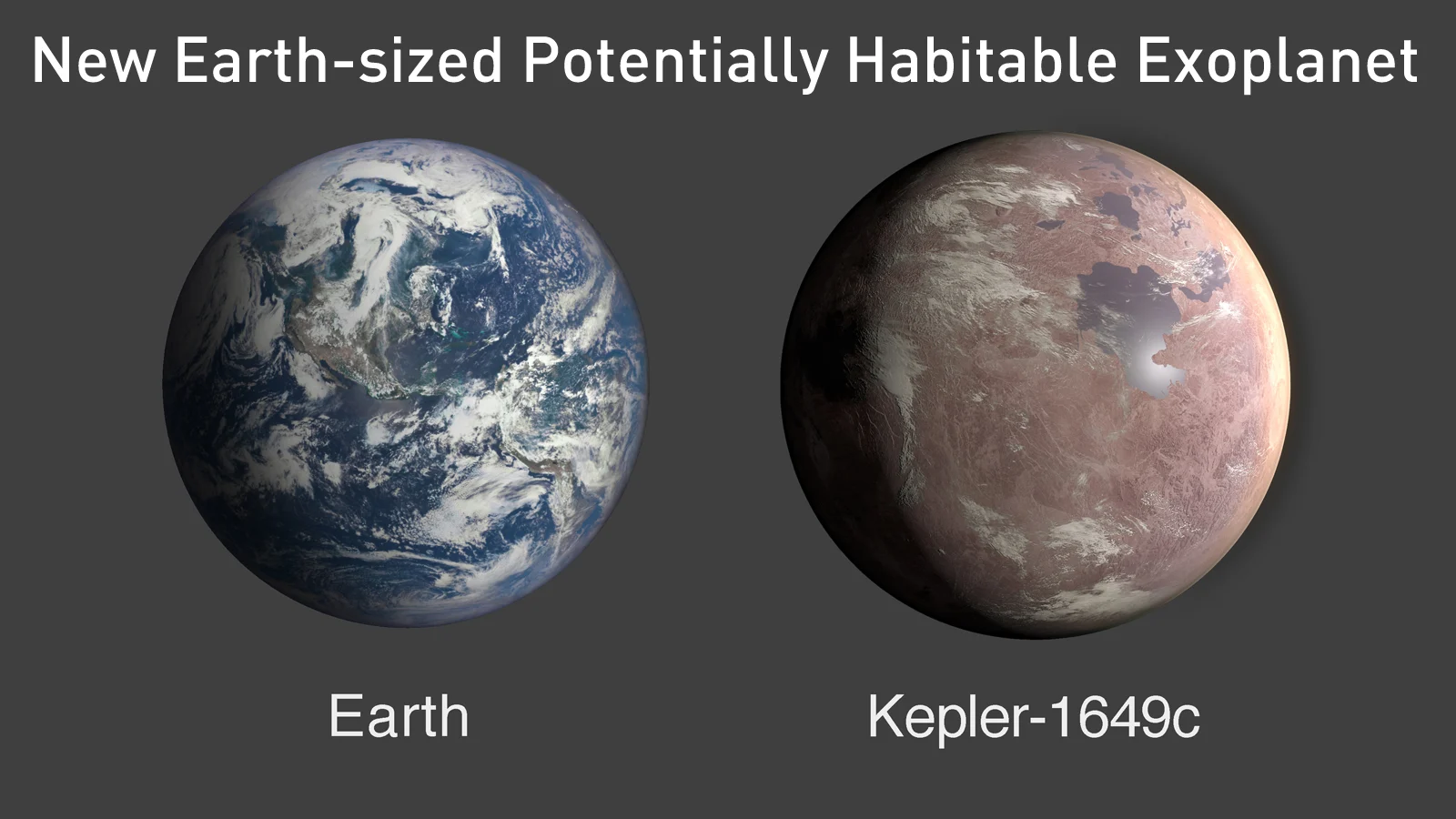
This artist's rendering of what Kepler-1649c could look like, shows that it is 1.06 times the size of Earth. Credits: NASA/Ames Research Center/Daniel Rutter
Since Kepler-1649c takes only 19.5 days to travel around its star, it is considerably closer to its star than Earth is to the Sun - roughly one-tenth the distance, in fact. Even so, since the red dwarf is significantly smaller and cooler than the Sun, Kepler-1649c resides solidly within its tiny star's habitable zone - the region where it is warm enough that a planet could have liquid water on its surface.
Comparing Kepler-1649c base temperature to Earth - taking only its size and distance from its star into account, but not considering the effects of an atmosphere - the researchers found that it would be around 20°C cooler than Earth. The warmest temperature we've ever seen on Earth, in modern times, was 58°C, so this exoplanet could certainly have some very comfortable climates on its surface.
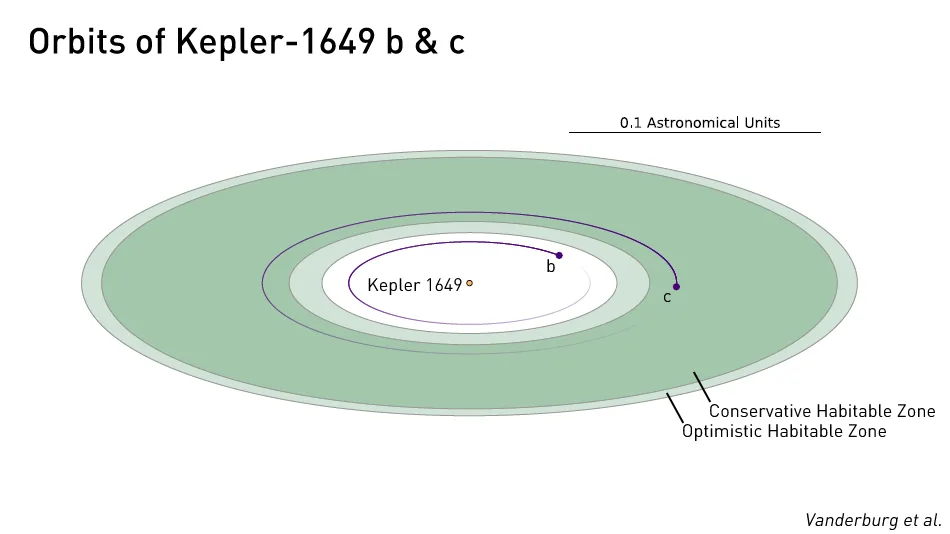
This diagram shows the structure of the Kepler-1649 planetary system, with Venus-like Kepler-1649b orbiting close to the star, and Kepler-1649c within the star's habitable zone. Credit: Vanderburg et al./Scott Sutherland
Exactly how truly Earth-like Kepler-1649c is, though, is going to depend on some other important factors.
First off, its atmosphere must be just right. Too thick, or too much carbon dioxide, and it could end up being burning hot like Venus. Too thin, and the atmosphere won't retain enough heat, making the planet more Mars-like.
Second, there would also need to be a significant supply of water in the star system, from comets and asteroids.
Third, the star's activity matters as well. Red dwarf stars are notorious for being very active, blasting out extreme stellar flares that outclass anything the Sun is capable of. At their close distance to the star, any potentially-habitable world circling a red dwarf could easily become sterilized by the frequent bombardment of these intense flares.

This artists rendering shows what Kepler-1649c could look like from its surface. Credits: NASA/Ames Research Center/Daniel Rutter
If Kepler-1649 is a quiet dwarf star, though, and Kepler-1649c has the right kind of atmosphere, this could be the most Earth-like planet we've found so far.
"This intriguing, distant world gives us even greater hope that a second Earth lies among the stars, waiting to be found," Thomas Zurbuchen, associate administrator of NASA's Science Mission Directorate, said in a NASA press release. "The data gathered by missions like Kepler and our Transiting Exoplanet Survey Satellite (TESS) will continue to yield amazing discoveries as the science community refines its abilities to look for promising planets year after year."
A THIRD HIDDEN PLANET?
With the discovery of Kepler-1649c, astronomers have already found a second hidden planet in this star system. According to their study, it may also contain a third, lurking unseen except for one tiny clue.
When the researchers carefully examined the timing of the orbits of Kepler-1649b and Kepler-1649c, they noticed something peculiar.
For every nine times Kepler-1649b orbits the red dwarf star, Kepler-1649c orbits almost exactly four times. This nine-to-four ratio to the planets' orbits is known as orbital resonance. Essentially, due to how close these two planets are in their orbits around the star, their mututal gravitational interactions caused them to settle into a very specific, very stable orbital rhythm.
A nine-to-four resonance is very rare, however. Unique, even! According to NASA, when they find orbital resonances, astronomers typically see ratios of three orbits to two orbits, or two orbits for every one orbit. They just haven't seen anything like a nine-to-four resonance yet, in all the thousands of systems they've found.
This may be the clue to the existence another planet hidden in this system, though.
If a third planet were to reside between Kepler-1649b and Kepler-1649c, the entire system would resolve down into two resonances of three-to-two ratio each, which is far more simple and well-known.
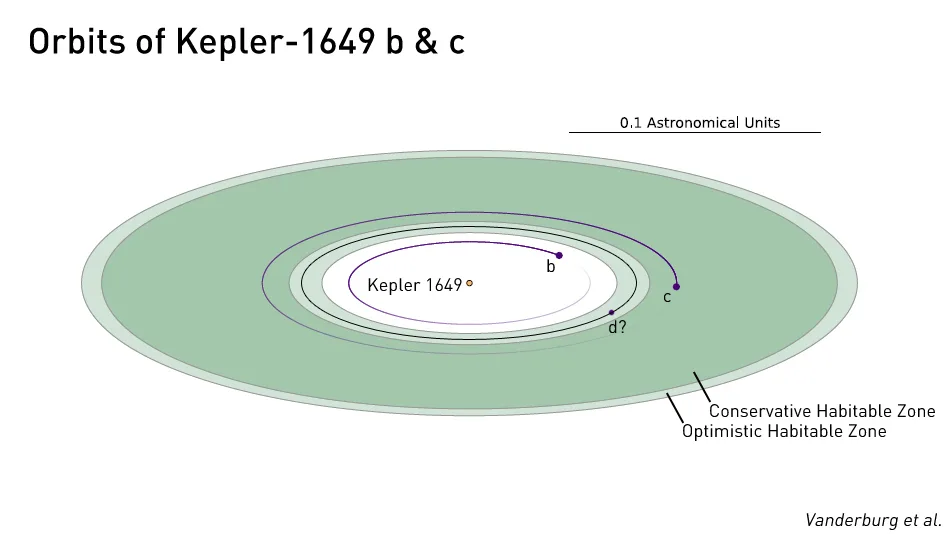
This diagram shows the structure of the Kepler-1649 planetary system, as above, but with the addition of a possible third planet, Kepler-1649 d, between the two known 'inhabitants' of this system. Credit: Vanderburg et al./Scott Sutherland
As for why this third planet hasn't been seen in the Kepler data - not even in the false-positive rejects, apparently - comes down to a couple of possiblities.
The third planet could be so small that its transits get lost in the normal variations of the star's brightness. Another possibility is that the planet has such a highly tilted orbit that it doesn't actually transit the star from our perspective.
Sources: NASA | Arxiv.org (pdf)










